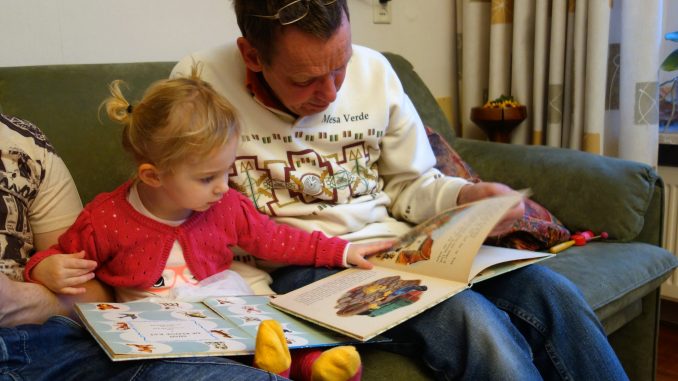
“A picture says a thousand words,” this is not only a popular quote, but is also a fact when it comes to teaching young children how to read.
When we read, the words ignite our imaginations resulting in pictures appearing in our mind’s eye. The more words we read (particularly a story book), the more pictures our mind’s generate – like cinema screens playing in the backs of our heads, all powered by the words entering our eyes or ears.
Unfortunately, young children have very limited imaginations and struggle to generate pictures in their heads clearly. Hence they need lots of visual aids to help them keep track of what they are reading and to help them make sense of it all.
As children grow older, they need pictures in story books less and less, as their own imaginations start to generate the pictures for them.
For this reason, the younger the child, the more pictures they require.
Imagine for a second what it would be like to read a story book without any pictures and you were also unable to think of any images to go with them, for example if you were reading a book in a different language; not only would the process of reading be dull, some of the words would also be meaningless and you would struggle to keep track of what you were reading.
So when choosing books for your child think carefully about their age and their reading ability, and whether or not they need books with more pictures.
Many parents are often dismissive of books with a few words and lots of pictures. However, most often than not, picture books help children develop their mind ’s eye and imagination, which in turn helps them to store pictures in their heads for use at a later date.
So if you are teaching your child to read, remember that young readers in particular, need graphics and images to help them retain information and help them understand what they are reading.
As a general rule:
0-2 years should use purely picture books, which you can talk to them about (preferably photographic images, as infants remember these more easily.)
2-5 years should use books that have a few words but lots of colourful pictures, so that your child can start to read words, as well as talk to you about the pictures.
6-8 years should choose books that have half words and half pictures (these do not need to be colourful pictures); but allow your child to follow what is happening in the story, using the pictures to help them retain the information.
8-11 years old children should read books with more words and less pictures, because by this age they are able to use some of their own imagination to conjure up any missing images in their mind’s eye themselves.
12-16 years children can read books without pictures, but may still prefer to see the occasional picture to be reassured that they are creating the “correct” images that the author intended.
It is for this reason storybooks turned into film or animation are so popular.
Even at an older age, children want to know that what they are seeing in their mind’s eye is as the author intended.
Therefore, the occasional picture helps them to focus on what they are reading.
However, adult readers, confidently generate images in their heads without worrying about what the author is trying to portray.
These ages are only a general guide, as children’s reading abilities can vary considerably from child to child.
Although most children have vivid imaginations from early on, some may grow into adults and still struggle to conjure up images in their mind’s eye, needing pictures to help them read even in adulthood.
Pictures are therefore a crucial part of reading, particularly in the early days. Therefore, children who do not come into contact with rich sources of images from the start, may struggle to develop their imagination causing reading difficulties in the long run.
Picture books have the added bonus of generating discussions and conversations with young children, as well as allowing them to add their own ideas and make up their own stories verbally.
Picture books should therefore be embraced by parents as readily as wordy books, particularly in the early days, as they play a significant part in the learning process.

Be the first to comment